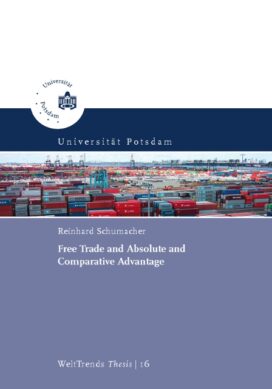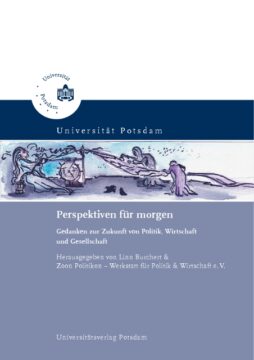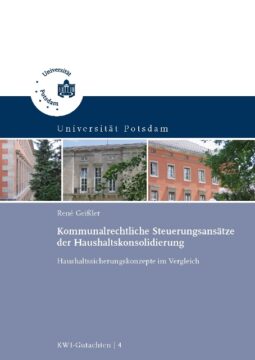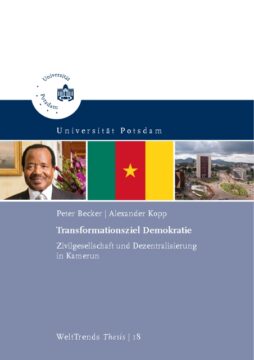This thesis deals with two theories of international trade: the theory of comparative advantage, which is connected to the name David Ricardo and is dominating current trade theory, and Adam Smith’s theory of absolute advantage. Both theories are compared and their assumptions are scrutinised. The former theory is rejected on theoretical and empirical grounds in favour of the latter. On the basis of the theory of absolute advantage, developments of free international trade are examined, whereby the focus is on trade between industrial and underdeveloped countries. The main conclusions are that trade patterns are determined by absolute production cost advantages and that the gap between developed and poor countries is not reduced but rather increased by free trade.
a critical comparison of two major theories of international trade
ISBN: 978-3-86956-195-0
108 pages
Release year 2013
Series: WeltTrends - Thesis , 16
7,00 €
Non-taxable transaction according to § 1 (1) UStG/VAT Act in combination with § 2 (3) UStG/VAT Act a. F. Providing this service, the University of Potsdam does not constitute a Betrieb gewerblicher Art/Commercial Institution according to § 1 (1) No. 6 or § 4 KStG/Corporate Tax Act. If the legal characterization of our business is changed to a commercial institution subsequently, we reserve the right to invoice VAT additionally. zzgl. Versandkosten
This thesis deals with two theories of international trade: the theory of comparative advantage, which is connected to the name David Ricardo and is dominating current trade theory, and Adam Smith’s theory of absolute advantage. Both theories are compared and their assumptions are scrutinised. The former theory is rejected on theoretical and empirical grounds in favour of the latter. On the basis of the theory of absolute advantage, developments of free international trade are examined, whereby the focus is on trade between industrial and underdeveloped countries. The main conclusions are that trade patterns are determined by absolute production cost advantages and that the gap between developed and poor countries is not reduced but rather increased by free trade.
Recommended Books
-
 2012
2012Linn Zoon Politikon - Werkstatt für Politik und Wirtschaft, Linn Burchert
Perspektiven für morgen
8,00 €Non-taxable transaction according to § 1 (1) UStG/VAT Act in combination with § 2 (3) UStG/VAT Act a. F. Providing this service, the University of Potsdam does not constitute a Betrieb gewerblicher Art/Commercial Institution according to § 1 (1) No. 6 or § 4 KStG/Corporate Tax Act. If the legal characterization of our business is changed to a commercial institution subsequently, we reserve the right to invoice VAT additionally.
zzgl. Versandkosten
Add to cart -
 2009
2009Kommunalrechtliche Steuerungsansätze der Haushaltskonsolidierung
7,00 €Non-taxable transaction according to § 1 (1) UStG/VAT Act in combination with § 2 (3) UStG/VAT Act a. F. Providing this service, the University of Potsdam does not constitute a Betrieb gewerblicher Art/Commercial Institution according to § 1 (1) No. 6 or § 4 KStG/Corporate Tax Act. If the legal characterization of our business is changed to a commercial institution subsequently, we reserve the right to invoice VAT additionally.
zzgl. Versandkosten
Add to cart -
 2014
2014Transformationsziel Demokratie
7,00 €Non-taxable transaction according to § 1 (1) UStG/VAT Act in combination with § 2 (3) UStG/VAT Act a. F. Providing this service, the University of Potsdam does not constitute a Betrieb gewerblicher Art/Commercial Institution according to § 1 (1) No. 6 or § 4 KStG/Corporate Tax Act. If the legal characterization of our business is changed to a commercial institution subsequently, we reserve the right to invoice VAT additionally.
zzgl. Versandkosten
Add to cart -
 2017
2017Bauer, Hartmut; Büchner, Christiane; Hajasch, Lydia; Kommunalwissenschaftliches Institut (Hrsg.)
Partizipation in der Bürgerkommune
10,50 €Non-taxable transaction according to § 1 (1) UStG/VAT Act in combination with § 2 (3) UStG/VAT Act a. F. Providing this service, the University of Potsdam does not constitute a Betrieb gewerblicher Art/Commercial Institution according to § 1 (1) No. 6 or § 4 KStG/Corporate Tax Act. If the legal characterization of our business is changed to a commercial institution subsequently, we reserve the right to invoice VAT additionally.
zzgl. Versandkosten
Add to cart
Publisher Info
Contact
Potsdam University Library
University Press
Am Neuen Palais 10
14476 Potsdam
Germany
verlag@uni-potsdam.de
0331 977-2094
0331 977-2292





